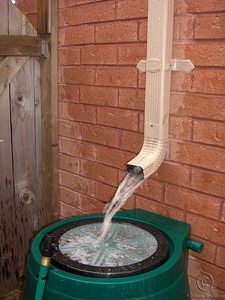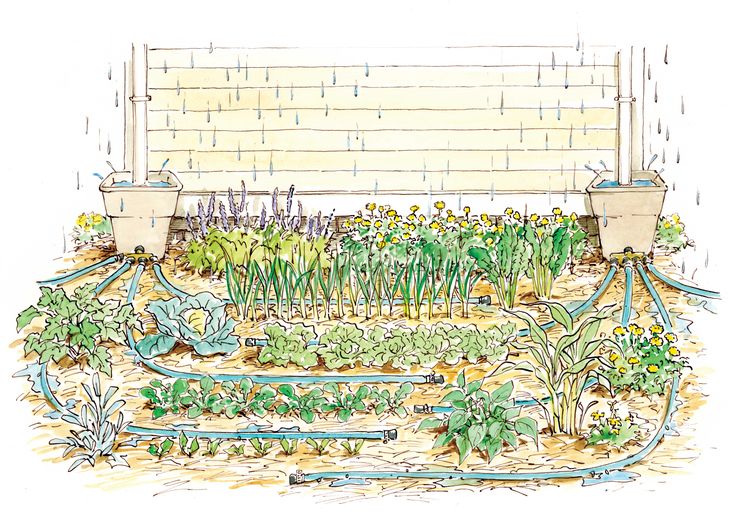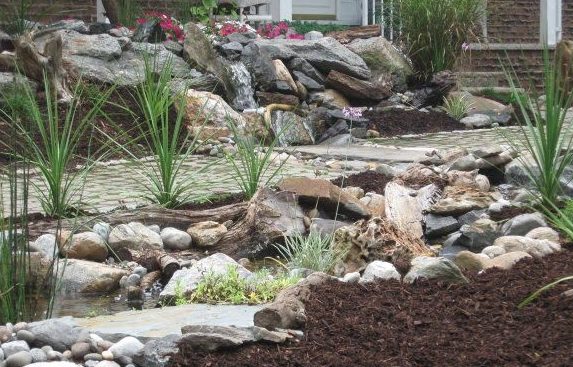All good things must come to an end, and so too must our four-part series on water-wise edible gardening. (Sad face.) To catch up on where we’ve been so far: we’ve gone over the basics, introduced you to some lesser-known desert delicacies, and let you in on the secret awesomeness of saving and sharing seeds. To wrap it all up, we’re talking again about one of our favorite topics – rainwater harvesting!
To begin this topic, we should mention another event that recently came to an end. September 30 was the official ‘final day’ of our monsoon season. And while Arizona isn’t exactly the Amazon rainforest, monsoon storms are a great reminder that we do get some significant free water from the sky. Below are ways to take advantage of this welcome resource!
IT’S ALL IN THE DESIGN
Gardens and yards that naturally use the rain to effectively water themselves are no accident – they’re the result of careful planning and construction. The key is to minimize the amount of downslope in your yard that will whisk water to the street and not keep it in your landscape. For starters, take a few minutes to observe the flow of water in your yard when the next storm hits (hopefully you were able to do so during the recent downpours). Tailor the shape and slopes of your landscape to avoid runoff and direct it towards your plants instead. Digging out shallow but wide depressions called swales creates a simple, passive system that funnels water directly to plants instead of the street.
You can also have a more active collection system in place so you can store rainwater for use at a later time. Gutters and downspouts on your roof are perfect for this, as you can set them up to feed into an above or below-ground storage chamber. The University of Arizona Cooperative Extension offers a guide to setting up the perfect storage system.
HEY, FREE WATER!
 There are many benefits to rainwater collection. Most obvious is all that water that Mother Nature is comp’ing you! Even a seemingly measly half-inch of rain can yield nearly 500 gallons of usable water when collected off the roof of a 1500 square foot home. Save the rain, save the money!
There are many benefits to rainwater collection. Most obvious is all that water that Mother Nature is comp’ing you! Even a seemingly measly half-inch of rain can yield nearly 500 gallons of usable water when collected off the roof of a 1500 square foot home. Save the rain, save the money!
Rainwater is also a soft, pure solution that will dilute salt buildup that’s prevalent in Arizona’s dry landscape. Excess salt can cause leaf burn and other not-so-good things for your plants, and rainwater that’s collected onsite keeps the soil’s salt content down and keeps you from having to run extra irrigation cycles needed to dilute salt buildup.
And, it’s just plain good for your plants! Sulfur, potash and other helpful minerals and microorganisms are all found in rainwater (and even free nitrogen during lightning storms), and all help plants grow even stronger.
GARDENS LOVE THE STUFF
 Using rainwater for your vegetable garden can be a bit tricky since it may be in various stages of growth starting with the germination of seedlings. These stages need very specific amounts of water. But rainwater is certainly a great resource to use to provide supplemental water to your edibles.
Using rainwater for your vegetable garden can be a bit tricky since it may be in various stages of growth starting with the germination of seedlings. These stages need very specific amounts of water. But rainwater is certainly a great resource to use to provide supplemental water to your edibles.
If you do store your rainwater in a collection system like a rain barrel or cistern, you can utilize the water as needed. But a more passive method of harvesting rainwater directly for a vegetable garden is to use a Native American technique called waffle gardening. This technique is the opposite of a raised garden bed. Think of your morning ‘Eggo’ and create sunken squares (1-2 feet wide) with berms around each square. Learn more about it in this article about a Zuni waffle garden.
Want to learn more about rainwater harvesting? Here are some related articles:


